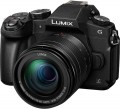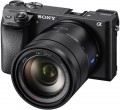DxOMark rating
The result shown by the camera in the DxOMark ranking.
DxOMark is one of the most popular and respected resources for expert camera testing. According to the test results, the camera receives a certain number of points; The more points, the higher the final score.
Sensor
— CCD (CCD). Abbreviation for Charge-Coupled Device. In such sensors, information is read from the photosensitive element according to the “line at a time” principle — an electronic signal is output to the image processor in the form of separate lines (there is also a “frame at a time” variant). In general, such matrices have good characteristics, but they are more expensive than CMOS. In addition, they are poorly suited for some specific conditions — for example, shooting with point light sources in the frame — which is why you have to use various additional technologies in the camera, which also affect the cost.
— CMOS (CMOS). The main advantages of CMOS matrices are ease of manufacture, low cost and power consumption, more compact dimensions than those of CCDs, and the ability to transfer a number of functions (focus, exposure metering, etc.) directly to the sensor, thus reducing the dimensions of the camera. In addition, the camera processor can read the entire image from such a matrix at once (rather than line by line, as in CCD); this avoids distortion when shooting fast-moving objects. The main disadvantage of CMOS is the increased possibility of noise, especially at high ISO values.
— CMOS (CMOS) BSI. BSI is an abbreviation for the English phrase "Backside Illumination". This is the name of "inverted" CMOS sensors, the light on which does not penetrate from the side of the photodiodes, but from the back of the matrix (from the side of the subst
...rate). With this implementation, the photodiodes receive more light, since it is not blocked by other elements of the image sensor. As a result, back-illuminated sensors boast high light sensitivity, which allows you to create images of better quality with less noise when shooting in low light conditions. BSI CMOS sensors require less light to properly expose a photo. In production, back-illuminated sensors are more expensive than traditional CMOS sensors.
— LiveMOS. A variety of matrices made using the technology of metal oxide semiconductors (MOS, MOS — Metal-Oxide Semiconductor). Compared to CMOS sensors, it has a simplified design, which provides less tendency to overheat and, as a result, a lower noise level. It is well suited for the "live" viewing mode (viewing in real time) of the image from the matrix on the screen or in the camera's viewfinder, which is why it received the word "Live" in the title. They also feature high data transfer rates.Sensor size
The physical size of the photosensitive element of a camera. Measured diagonally, often indicated in fractions of an inch — for example, 1/2.3" or 1/1.8" (accordingly, the second matrix will be larger than the first). Note that in such designations it is not the “ordinary” inch (2.54 cm) that is used, but the so-called "Vidiconovsky", which is less than a third and is about 17 mm. This is partly a tribute to the tradition that comes from television tubes — “vidicons” (the forerunners of modern matrices), partly a marketing ploy that gives buyers the impression that the matrices are larger than they actually are.
Anyway, at equal resolution (see Number of megapixels),
a larger sensor size means a larger size of each individual pixel; accordingly, on large sensors, more light enters each pixel, which means that such sensors have a higher photosensitivity (see Light sensitivity) and a lower noise level, especially when shooting in low light conditions.
Most often in modern cameras there are such options:
—
1/2.3" and 1/1.7". Small matrices, typical for models without interchangeable lenses — compacts and
digital ultrazooms(see "Camera type").
—
4/3. A kind of "transitional option" between small sensors of compact devices and large, but at the same time expensive "SLR" APS-C. The size of such a matri
...x is 18x13.5 mm, which gives a diagonal of 22.5 mm (approximately 4/3 of the "Vidicon" inch described above, hence the name). It is used in SLR and "mirrorless" cameras (see "Camera type"), mainly entry-level, with Four Thirds and Micro Four Thirds mounts, respectively.
— APS-C. The size of matrices of this type can vary from 20.7x13.8 mm to 25.1x16.7 mm, depending on the manufacturer. They are widely used in entry-level and mid-level SLRs, as well as "mirrorless" models.
— APS-H. Somewhat larger than the APS-C described above (the size is 28.1x18.7 mm), otherwise it is almost completely the same.
— Full frame (or APS). The size of such a matrix is equal to the frame size of a classic photographic film — 36x24 mm. It is usually equipped with professional-grade SLR cameras.
— Big frame. This category includes all types of matrices, the size of which exceeds 36x24 mm (full frame). Cameras with similar sensors belong to the so-called medium format class and are, usually, professional models of the premium level. Large matrices allow you to use a resolution of tens of megapixels, while maintaining high clarity and colour quality, however, such devices cost accordingly.Total MP
The total number of individual light sensitive dots (pixels) provided in the camera's sensor. Denoted in megapixels - millions of pixels.
The total number of MPs, as a rule, is greater than the number of megapixels from which the frame is directly built (for more details, see "Effective number of MPs"). This is due to the presence of service areas on the matrix. In general, this parameter is more of a reference than practically significant: a larger total number of MPs with the same size and effective resolution means a slightly smaller size of each pixel, and, accordingly, an increased likelihood of noise (especially at high ISO values).
Effective MP number
The number of pixels (megapixels) of the matrix directly involved in the construction of the image, in fact — the number of points from which the captured image is built. Some manufacturers, in addition to this parameter, also indicate the total number of MPs, taking into account the service areas of the matrix. However, it is the effective number of MPs that is considered the main indicator — it is this that directly affects the maximum resolution of the resulting image (see “Maximum image size”).
A megapixel is 1 million pixels. Numerous megapixels ensures high resolution of the captured photos, but is not a guarantee of high-quality images — much also depends on the size of the sensor, its light sensitivity (see the relevant glossary items), as well as hardware and software image processing tools used in the camera. Note that for small matrices, high resolution can sometimes be more of an evil than a blessing — such sensors are very prone to the appearance of noise in the image.
Maximum image size
The maximum size of photos taken by the camera in normal (non-panoramic) mode. In fact, this paragraph indicates the highest resolution of photography — in pixels vertically and horizontally, for example, 3000x4000. This indicator directly depends on the resolution of the matrix: the number of dots in the image cannot exceed the effective number of megapixels (see above). For example, for the same 3000x4000, the matrix must have an effective resolution of at least 3000*4000 = 12 million dots, that is, 12 MP.
Theoretically, the larger the size of the photo, the more detailed the image, the more small details can be conveyed on it. At the same time, the overall image quality (including the visibility of fine details) depends not only on resolution, but also on a number of other technical and software factors; see "Effective MP number" for more details.
Sensor cleaning
The presence in the camera of a special mechanism for
cleaning the matrix from dust and other contaminants.
This function is found only in models with interchangeable lenses — "reflex cameras" and MILC (see "Camera type"). When replacing the lens in such cameras, the sensor turns out to be open, and the probability of its contamination is quite high; and extraneous particles on the matrix, at best, lead to the appearance of extraneous artifacts, at worst, to damage to the sensor. To avoid this, cleaning systems are provided. They usually work on the principle of ultrasound: high-frequency vibration "resets" debris from the surface of the sensor.
Note that no cleaning system is perfect — in particular, such systems are “too tough” for condensate, salt deposits and other similar contaminants. So the matrix may still need manual cleaning (ideally, in a service centre). Nevertheless, this function allows you to effectively deal with at least dust, which greatly simplifies the life of the user.
No AA filter
No AA filter in camera design.
The AA filter is responsible for "anti-aliasing" — the elimination of the moiré effect. This effect can occur when shooting objects with a lot of thin horizontal or near-horizontal lines (for example, a brick wall at a great distance, or a suit made of a certain type of fabric). It leads to the appearance of a characteristic pattern in the picture, which, usually, is inappropriate; to eliminate this phenomenon, an AA filter is provided. At the same time, this feature is said to reduce the overall sharpness of the image; therefore, it may not be available in some cameras. These are mainly professional models: the absence of an AA filter gives the photographer additional features, but puts forward increased requirements for shooting skills.
Mount (bayonet)
The type of bayonet mount — mount for interchangeable lenses — provided in a SLR or MILC camera (see "Camera type"). Bayonets come in different sizes, and interchangeable lens specifications usually indicate which mount it is designed for. Most often, mounts of different types are not compatible with each other, but there are exceptions (sometimes directly, sometimes using adapters).
Also note that one brand can use different mounts for different classes of cameras — and vice versa, one mount can be used by several manufacturers. So, Canon releases cameras with mounts
EF-M,
EF-S,
EF and
Canon RF. Leica has
Leica M,
Leica SL,
Leica TL. Nikon has in its arsenal
Nikon 1,
Nikon F,
Nikon Z. Pentax —
Pentax 645,
Pentax K, Pentax Q. Samsung offers
NX and NX-M mounts. Sony cameras have
Sony A and
Sony E, Fuji has
Fujifilm G and
Fujifilm X. And as an example of a mount used by different brands, one can cit
...e Micro 4/3, which is widespread in Olympus and Panasonic cameras.
